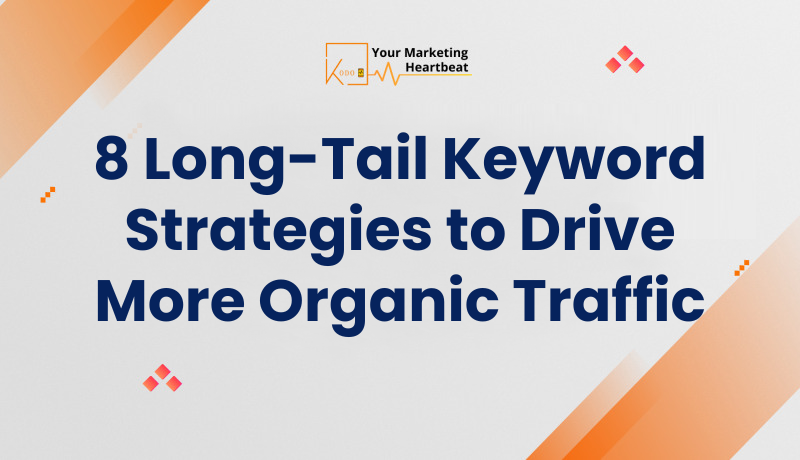
In the ever-evolving landscape of digital marketing, staying ahead of the curve is crucial for businesses aiming to boost their online visibility. One of the most effective ways to achieve this is by harnessing the power of long-tail keywords. These specific, often longer phrases can significantly enhance your search engine optimization (SEO) efforts and drive more targeted organic traffic to your website. In this comprehensive guide, we’ll explore eight innovative strategies to leverage long-tail keywords and elevate your online presence.
In today’s digital age, the importance of a robust online presence cannot be overstated. As more businesses vie for attention in the crowded digital marketplace, standing out becomes increasingly challenging. This is where long-tail keywords come into play, offering a strategic advantage to those who know how to utilize them effectively.
Long-tail keywords are more specific and less competitive than their shorter counterparts, making them invaluable for businesses looking to attract highly targeted traffic. By focusing on these niche phrases, you can tap into a goldmine of potential customers who are actively searching for exactly what you offer. Let’s dive into the strategies that can help you harness this potential and drive more organic traffic to your site.
Before we delve into the strategies, it’s crucial to have a solid grasp of what long-tail keywords are and why they matter. Long-tail keywords are longer, more specific phrases that users type into search engines when looking for particular information or products. Unlike short, generic keywords, long-tail keywords typically consist of three or more words and are often phrased as questions or detailed descriptions.
For instance, instead of targeting the broad term “shoes,” a long-tail keyword might be “comfortable running shoes for flat feet.” This specificity is what makes long-tail keywords so powerful. They may have lower search volumes individually, but collectively, they make up a significant portion of search queries and often indicate higher purchase intent.
The beauty of long-tail keywords lies in their ability to attract qualified traffic. Users searching with these specific terms are usually further along in the buying process and more likely to convert. Moreover, the competition for long-tail keywords is generally less fierce, making it easier for smaller businesses to rank well in search engine results pages (SERPs).
By incorporating long-tail keywords into your content strategy, you’re not just improving your chances of ranking higher; you’re also aligning your content more closely with user intent. This alignment is crucial for improving your website’s relevance and authority in the eyes of both users and search engines.
The foundation of any successful long-tail keyword strategy is thorough research. This process involves identifying the specific phrases your target audience uses when searching for products or services like yours. While it may seem daunting, there are several effective methods and tools to streamline this process.
Start by brainstorming topics relevant to your business. Think about the questions your customers frequently ask and the problems they’re trying to solve. This initial step can provide valuable insights into potential long-tail keywords.
Next, leverage keyword research tools to expand your list. Popular options include:
These tools can help you discover related keywords, assess search volumes, and gauge competition levels. Look for keywords with decent search volumes but lower competition scores – these are often the sweet spots for long-tail keywords.
Don’t forget to analyze your competitors’ content. What long-tail keywords are they targeting? This can provide inspiration and help you identify gaps in your own strategy.
Another valuable source of long-tail keywords is your own website’s search function. If you have an internal search feature, review the queries users enter. These can be goldmines for understanding the specific language your audience uses.
Remember, keyword research is an ongoing process. Search trends change, and new opportunities emerge regularly. Make it a habit to revisit and refine your keyword list periodically to stay ahead of the curve.
Understanding and aligning with user intent is crucial when targeting long-tail keywords. User intent refers to the purpose behind a search query – what the user hopes to achieve or find. By optimizing your content to match this intent, you increase the likelihood of attracting and retaining visitors.
There are generally four types of user intent:
When targeting long-tail keywords, consider which type of intent they align with. For example, a query like “how to choose running shoes for flat feet” indicates informational intent, while “buy comfortable running shoes for flat feet” suggests transactional intent.
To optimize for user intent:
Remember, search engines are becoming increasingly sophisticated at understanding context and intent. By creating content that genuinely meets user needs, you’re not only improving your chances of ranking well but also providing value to your audience – a win-win situation.
Question-based long-tail keywords are particularly valuable for attracting organic traffic. These queries often indicate a user seeking specific information, making them perfect opportunities to showcase your expertise and provide value.
To effectively leverage question-based keywords:
Identify common questions in your niche:
Create content that directly answers these questions:
By focusing on question-based long-tail keywords, you’re not only improving your SEO but also positioning your brand as a helpful resource in your industry. This approach can significantly enhance your authority and trustworthiness in the eyes of both users and search engines.
Topic clusters are an effective way to organize your content around long-tail keywords while building topical authority. This strategy involves creating a pillar page that broadly covers a main topic, with several related cluster pages linking back to it. Each cluster page focuses on a specific long-tail keyword related to the main topic.
Here’s how to implement a topic cluster strategy:
Identify your main topic:
Brainstorm related subtopics:
Develop your pillar content:
Create cluster content:
Interlink your content:
For example, if your main topic is “digital marketing,” your pillar page might cover the basics of digital marketing strategies. Cluster pages could then focus on long-tail keywords like “social media marketing for small businesses,” “email marketing best practices for B2B,” or “SEO techniques for e-commerce websites.”
This approach not only helps you target a wide range of long-tail keywords but also demonstrates your expertise on the broader topic. As you build out your topic clusters, you create a comprehensive resource that search engines recognize as authoritative, potentially boosting your overall rankings.
For businesses with a physical presence or those serving specific geographic areas, local SEO presents a golden opportunity to leverage long-tail keywords. Local searches often naturally include long-tail phrases, making them perfect targets for businesses looking to attract nearby customers.
Here’s how to optimize for local long-tail keywords:
Include location-specific terms:
Optimize your Google My Business listing:
Create location-specific landing pages:
Leverage local content:
Optimize for “near me” searches:
Use schema markup:
By focusing on local long-tail keywords, you can attract highly targeted traffic from users in your area who are more likely to convert into customers. This strategy is particularly effective for small businesses competing against larger, national brands.
User-generated content (UGC) can be a goldmine for long-tail keywords. Customer reviews, forum discussions, and social media comments often contain natural, conversational language that reflects how real people search for products or services. By leveraging UGC, you can uncover valuable long-tail keywords and create content that resonates with your audience.
Here’s how to make the most of UGC for your long-tail keyword strategy:
Monitor customer reviews:
Engage in social listening:
Encourage and analyze customer questions:
Create content based on UGC insights:
Incorporate UGC into your website:
Optimize for voice search:
By tapping into the language your customers actually use, you can create content that not only ranks well for long-tail keywords but also speaks directly to your audience’s needs and preferences. This approach can significantly improve your content’s relevance and effectiveness in driving organic traffic.
While creating content is crucial, don’t overlook the importance of technical SEO in your long-tail keyword strategy. Properly optimizing your website’s technical elements can significantly boost your visibility for these specific phrases.
Here’s how to incorporate long-tail keywords into your technical SEO efforts:
Optimize meta titles and descriptions:
Use descriptive URLs:
Implement schema markup:
Include relevant long-tail keywords in your image alt text.
Create an XML sitemap:
By integrating long-tail keywords into these technical aspects of your website, you create a solid foundation for your content to rank well in search results. Remember, technical SEO works hand-in-hand with your content strategy to improve your overall search visibility.
Implementing a long-tail keyword strategy is not a one-time task. To truly succeed, you need to continuously monitor your performance and refine your approach based on the data you gather. This ongoing process ensures that your strategy remains effective and adapts to changes in search trends and user behavior.
Here’s how to effectively monitor and refine your long-tail keyword strategy:
Track keyword rankings:
Analyze organic traffic:
Monitor search console data:
Conduct regular content audits:
Stay informed about algorithm updates:
By consistently monitoring and refining your approach, you can ensure that your long-tail keyword strategy remains effective and continues to drive valuable organic traffic to your website. Remember, SEO is an ongoing process, and staying agile and responsive to changes is key to long-term success.
Incorporating long-tail keywords into your SEO strategy is a powerful way to drive targeted organic traffic to your website. By focusing on these specific, often less competitive phrases, you can attract users who are more likely to engage with your content and convert into customers.
The eight strategies we’ve explored – from comprehensive keyword research to ongoing monitoring and refinement – provide a robust framework for leveraging long-tail keywords effectively. Remember, the key to success lies in understanding your audience, creating valuable content that meets their needs, and continuously optimizing your approach based on performance data.
As you implement these strategies, keep in mind that patience is crucial. SEO is a long-term game, and it may take time to see significant results. However, with consistent effort and a well-executed long-tail keyword strategy, you can steadily improve your search visibility, attract more qualified traffic, and ultimately grow your business in the digital landscape.
Stay curious, keep learning, and don’t be afraid to experiment with new approaches. The world of SEO is always evolving, and those who adapt and innovate are the ones who will thrive. By making long-tail keywords a cornerstone of your SEO efforts, you’re positioning your business for sustainable online success.



April 23, 2024